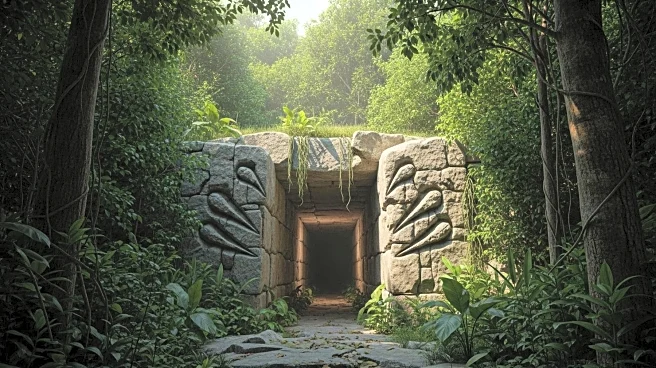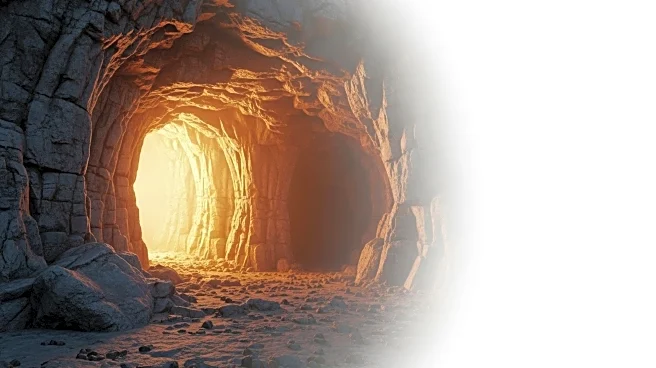What's Happening?
A recent study published in the Proceedings of the National Academy of Sciences has provided new insights into the timeline of human evolution by analyzing volcanic ash layers in the Turkana Basin, Kenya. This region, known for its rich fossil sites, has been a focal point for understanding early human origins. The study utilized high-precision dating techniques to refine the age estimates of volcanic ash layers, known as the Nariokotome tuffs, which are crucial for dating fossil finds. By distinguishing these layers as separate volcanic events with precise eruption dates, researchers have improved the timeline of human evolution. The study also employed laser-based mass spectrometry to analyze trace elements in the ash, providing unique geochemical fingerprints that help differentiate between closely timed eruptions.
Why It's Important?
This advancement in dating volcanic ash layers is significant for the field of archaeology and human evolution studies. By providing more accurate timelines, researchers can better understand the environmental conditions and timelines in which early humans and their ancestors lived. This can lead to insights into how different hominin species evolved, interacted, and adapted to changing environments. The refined dating methods also have broader applications beyond Kenya, potentially aiding in the study of human evolution in other regions. This research could help answer longstanding questions about the emergence of new tool technologies and species, as well as the impact of environmental changes on early human development.
What's Next?
The study's findings open the door for further research using these refined dating techniques. Researchers plan to apply these methods to other ash layers within the Turkana Basin and beyond, which could provide a more comprehensive understanding of human evolution. Future studies may focus on correlating these geological timelines with archaeological sites to explore the relationship between environmental changes and human evolution. Additionally, the techniques could be used to investigate other regions with similar volcanic activity, potentially offering new insights into the global history of human evolution.
Beyond the Headlines
The study highlights the importance of interdisciplinary approaches in archaeology, combining geology, chemistry, and archaeology to solve complex questions about human history. The use of high-precision dating and geochemical fingerprinting represents a significant technological advancement in the field. This research also underscores the role of natural events, such as volcanic eruptions, in shaping the course of human evolution by providing natural time markers that help reconstruct past environments and timelines.












